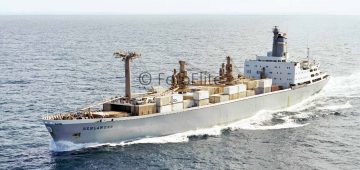The Wilhelm H. Müller Group

 Wilhelm Heinrich Müller was of German nationality and formed a trading company in Dusseldorf on 18th April 1876 with his brother in law Willem Neese to supply iron ore to German blast furnaces. Müller knew the iron and steel business well, having earlier worked in a blast furnace. On 3rd June 1878 he opened a subsidiary in Rotterdam, and he forged close ties with the shipping company of Ruys & Company, and he met Willem Kroller there. In 1881, Kroller won 100,000 guilders in the Belgian lottery and decided to invest in Müller’s company, and became its manager. Willem Kroller fell ill in 1885 and was succeeded by his brother Anton. The two families were then related by marriage in 1888 with Helene Müller, daughter of Wilhelm, marrying Anton Kroller. Anton Kroller then took over the management of the Rotterdam branch in 1889 at the age of 27 years on the death of the founder, Wilhelm Heinrich Müller.
Wilhelm Heinrich Müller was of German nationality and formed a trading company in Dusseldorf on 18th April 1876 with his brother in law Willem Neese to supply iron ore to German blast furnaces. Müller knew the iron and steel business well, having earlier worked in a blast furnace. On 3rd June 1878 he opened a subsidiary in Rotterdam, and he forged close ties with the shipping company of Ruys & Company, and he met Willem Kroller there. In 1881, Kroller won 100,000 guilders in the Belgian lottery and decided to invest in Müller’s company, and became its manager. Willem Kroller fell ill in 1885 and was succeeded by his brother Anton. The two families were then related by marriage in 1888 with Helene Müller, daughter of Wilhelm, marrying Anton Kroller. Anton Kroller then took over the management of the Rotterdam branch in 1889 at the age of 27 years on the death of the founder, Wilhelm Heinrich Müller.
In that same year of 1889, the Algemeene Scheepvaart Maats was founded in Rotterdam to enter the American coal and grain trades, and to participate in the shipment of iron ore from the Müller group mines in Normandy, North Africa, Liberia, Latin America, Sweden and Spain to Rotterdam or Hamburg. Iron ore and granite from the Dielette mines near Cherbourg and the Larchamp mines near Caen were shipped from these two ports to Rotterdam, and also from the small port of Flamanville on the west coast of the Cotentin peninsula.

Five Doxford ‘Turret’ ships were ordered from the famous Wearside shipbuilder for these trades. Maud Cassel was launched at Pallion on 26th December 1896, Skandia on 16th November 1899, Grangesberg on 14th March 1903, Blotberg on 15th February 1907, and Admiraal de Ruyter was launched at Pallion on 16th March 1907 and named after the Dutch Admiral de Ruyter. Maud Cassel stranded on the Arkobadan reef at Hapinge in Sweden on 22nd February 1906 while on a voyage from Rotterdam to Oxelosund in ballast, she later broke in two and was lost. Skandia was sold to Rederi A/B Lulea Ofoten without change of name in 1905, and was lost by collision near Haugesund on 9th November 1915 while on a voyage from Narvik to Rotterdam with iron ore.
Subscribe today to read the full article!
Simply click below to subscribe and not only read the full article instantly, but gain unparalleled access to the specialist magazine for shipping enthusiasts.






Comments
Sorry, comments are closed for this item